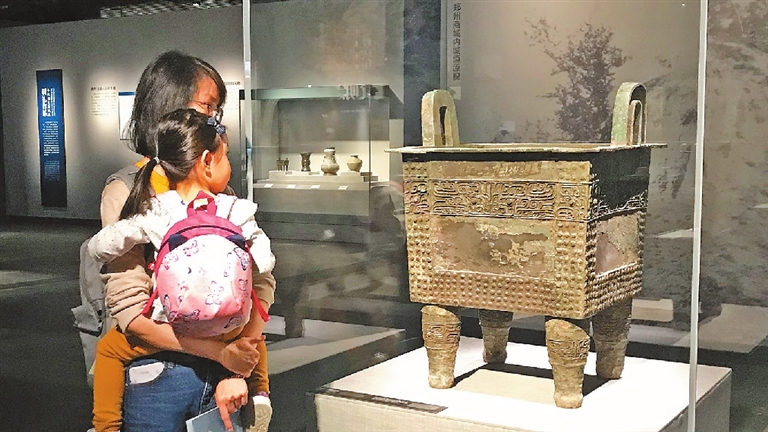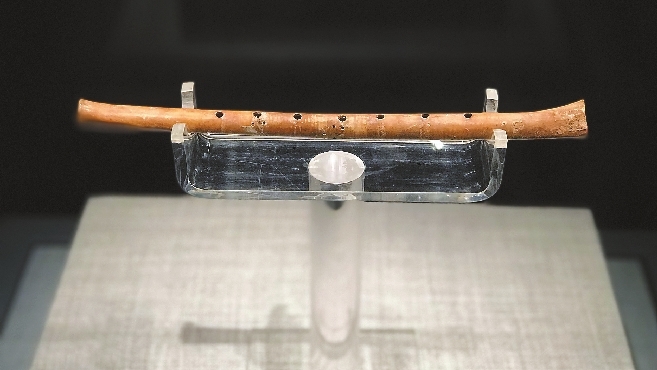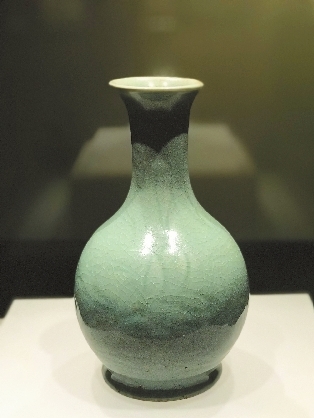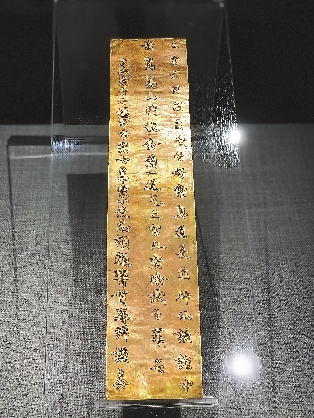



Cao Zhen
caozhen0806@126.com
PLENTIFUL cultural relics from the birthplace of Chinese civilization have arrived in Shenzhen for the yearlong “Plentiful Central Plain: Henan Resplendent Antiquity” exhibition at Nanshan Museum. Entry is free.
On loan from Henan Museum in Central China’s Henan Province, the 200-plus exhibited items include prehistoric relics, bronze vessels, gold, jade, pottery and porcelain wares of various dynasties, recounting that Henan has over 3,000 years of recorded history and used to be China’s political, economical and cultural center for centuries.
Since the Xia Dynasty (2070-1600 B.C.), more than 20 dynasties had established capitals in Henan, and four of the Eight Great Ancient Capitals of China were located in Henan’s Luoyang, Kaifeng, Anyang and Zhengzhou. Since Henan is home to a large number of heritage sites, Henan Museum in Zhengzhou now has a collection of more than 170,000 treasures. Among its top nine treasures, five have been selected for the Shenzhen exhibition. They are the Bone Flute (贾湖骨笛), Wu Zetian Gold Ingot (武则天金简), Ru Ware Kiln Egg-Blue Goose Neck Vase (汝窑天蓝釉刻花鹅颈瓶), Rectangular Bronze Cooking Vessel With Animal and Raised Nail Patterns (兽面乳钉纹铜方鼎 or 杜岭方鼎) and Fu Hao Owl-shaped Vessel (妇好鸮尊). The Fu Hao Owl-shaped Vessel will not arrive in Shenzhen until September.
Entering Nanshan Museum’s spacious exhibition room on the second floor, visitors will hear dreamlike flute music from a small video. The music was played on the Bone Flute, the first exhibited item that visitors will see. The Bone Flute, made from a crane’s ulna in the Neolithic period, is the earliest musical instrument with fine quality to have been found in China and proves that humans had already experimented and manufactured musical instruments about 7,000 years ago. The flute was excavated at the Jiahu Site in central Henan in 1987, where more than 40 bone flutes were found.
The Rectangular Bronze Cooking Vessel With Animal and Raised Nail Patterns looks similar to most bronze cauldrons at first sight. What makes it significant is that the vessel and a bigger one excavated together in 1974 were the earliest ritual objects with taotie (a mythical ferocious animal motif) patterns and nail patterns. The larger of the two has now been collected by the National Museum of China in Beijing. This pair of rectangular bronze vessels were believed to be made in the early Shang Dynasty (1600-1046 B.C.), 300 years earlier than the famous Houmuwu Square Cauldron. The pair is also of great importance for the study of the social systems and casting techniques of the Shang Dynasty.
The Fu Hao Owl-shaped Vessels were also excavated as a pair in 1976, with one currently being housed in the National Museum of China. Unearthed from the tomb of Fu Hao in northern Henan, the bronze wine vessels bear the design of an owl with rich and delicate patterns. In the Shang Dynasty, the owl was believed to hold mythical powers, and many Shang bronzes were clearly inspired by the solemn owl motif. But from a modern aesthetic point of view, this symmetrical owl vessel with its two legs and a tail forming a triangle to support it looks cute. It is no wonder Henan Museum’s owl vessel-themed toys and souvenirs are well received by visitors today.
The Wu Zetian Gold Ingot, with pure-gold content exceeding 90 percent, is a rare relic of Empress Wu Zetian (624-705) since her tomb in Shaanxi Province has not been excavated yet. The gold ingot, carved with 63 characters, is also a precious source that furthers the research into the empress’ thoughts during her later years. It was discovered by a farmer in rocks in western Henan’s Songshan Mountain in 1982, where the empress brought this gold ingot for absolving her sins.
The exhibition also showcases large quantities of pottery and porcelains, including a delicate pottery bowl made in the Neolithic period, brilliant Tang Dynasty (618-907) glazed porcelains and beautiful porcelain pillows made in the Song Dynasty (960-1279).
Among the porcelains, Ru Ware Kiln Egg-Blue Goose Neck Vase looks plain but the Ru Kiln in central Henan ranked first among the five most famous imperial kilns in the Northern Song Dynasty (960-1127). Ru ware is an extremely rare type of Chinese pottery and only 150-plus complete pieces survive in the world today, according to Henan Museum’s website. They are usually not decorated, with only a distinctive pale and clean sky-blue glaze.
The exhibition has detailed Chinese and English captions introducing the items and Chinese history. Two sand tables at the exhibition depict part of the renowned Song Dynasty painting, “Along the River During the Qingming Festival.” The 5.28-meter-long painting captures the daily life of people and the landscape of the capital, Bianjing (present-day Kaifeng) during the Northern Song.
Dates: Until April 18, 2020 Hours: 10 a.m.-6 p.m., closed Mondays Venue: Nanshan Museum, 2093 Nanshan Boulevard, Nanshan District (南山区南山大道2093号南山博物馆) Metro: Line 1 to Taoyuan Station (桃园站), Exit B | 
